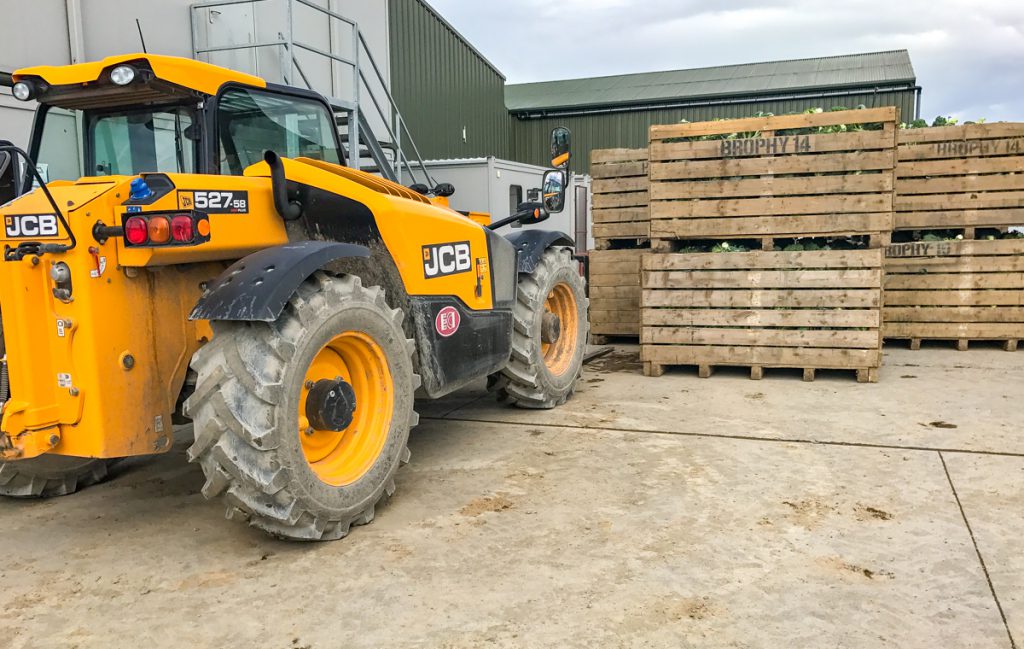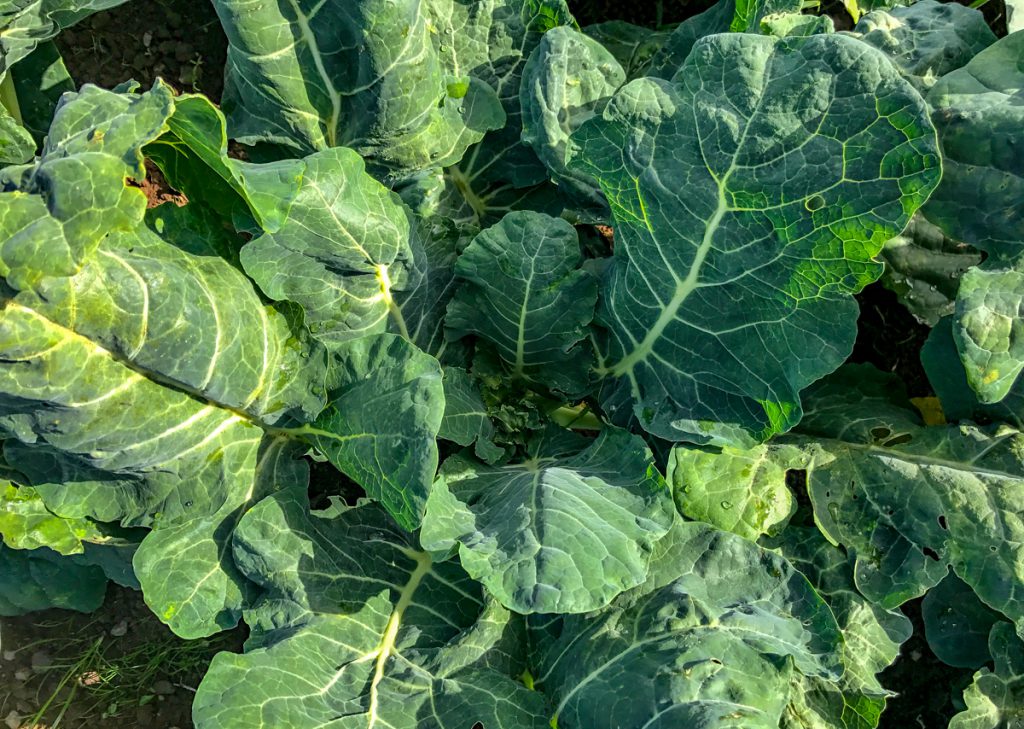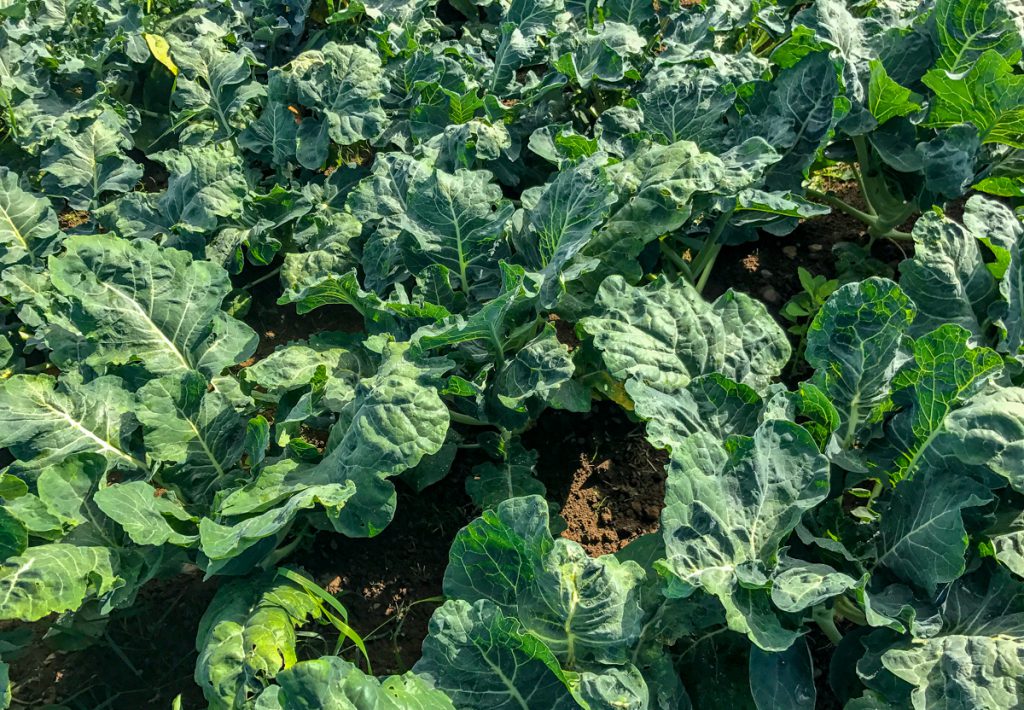Paul Brophy is one of a small number of large-scale broccoli growers in the country. His vegetable business is solely broccoli and for a six-week period this summer that job completely revolved around getting water to that broccoli.
This added €500/ac to the cost of growing the crop – due to irrigation and extra labour to run irrigation equipment. As a result of the spend and hard work, he expects his yield to be back by just 20%. Had he not spent the money, he would most likely have no crops to sell at all.
Paul usually trades for three weeks in June. However, the wet spring resulted in late planting and Paul Brophy Produce traded for just three days in June as a result. The dry weather was the next problem.
Reflecting on the drought, he tells AgriLand how he coped with the situation, the role he played in negotiating with the Government for support and how this year’s extreme weather has changed his plans for next year.
Playing catch up on irrigation
Paul explained that in some years no irrigation is required on vegetable farms.
“Everybody thought it would be a four-week dry period and the rain would come and it would be too wet. We, like most people, have had an irrigation system that was sized to previous times. We had one good irrigation system.
“To put it in perspective, there were 700 hours on it and it was 10 years old. We used it seven seasons out of the 10. That machine now has over 2,000 hours on it and we bought two additional systems this year.
We were pumping the equivalent of an Olympic-size swimming pool a day on our crops – 2.5 million litres of water – and we were behind. We were playing catch up.
“I think most farmers started watering with loads of enthusiasm. The first thing we’d always have to water is young plants to get them to start growing. Then, if the drought prolonged, we’d have to water crops to finish them, but we normally wouldn’t water in between these times. This year we did because crops just shut down; they stopped growing.
“We started to panic about four weeks in when we were watering 24 hours a day with one system; we’d very rarely do that. We’d normally set it up during the day and work it at night. You don’t get the same value out of the water during the day.”
By chance, Paul had installed soil moisture metres on his farm this season. Soil moisture monitors were set up in some of the broccoli fields and this allowed him to monitor soil moisture deficits.
“About a week into 24-hour irrigation, we started to see that we were rapidly falling. We installed a soil moisture metre that gives us a daily report of the soil moisture deficit down to 1m this year. We had nothing to benchmark against it because it was our first year using it.
It sends an email everyday and the minute it went into stress we saw a massive deterioration in the crops.
“Going forward, we’ll never be without the weather station because it will be a trigger for us to start irrigating. We could see the rates of evaporation and we could see the rates of rainfall; the plant was losing 4-5mm of water everyday.”
However, crops were still going into stress.
In one field, the metre showed plant stress and on Friday the field was green; on Monday the field was red.
The first field that had a weather station working in a crop is currently being harvested.
“We got it back. It took us about four days to get the irrigation in – we had 3.4km of piping to lay across four farmers’ lands and a massive pump. We took a little bit of a hit in yield, but not in quality.”
Getting out of trouble
Paul is the chairman of the IFA (Irish Farmers’ Association) Horticulture Committee. As well as coping with the drought on his own farm, he was lobbying for support from the Government and the supermarkets along with a number of other people.
He commended the work of Tara McCarthy (CEO of Bord Bia) who outlined the fact that supermarkets who have signed up to Origin Green had to note that a key pillar in this programme is the sustainability of the supply chain.
The CEO visited crops which had been irrigated, a farm which had just bought an irrigation system and a crop which had not been irrigated at all. A week later Minster Creed visited the same fields and talks began between growers and the department.
Financial support and changes to specifications by the supermarkets helped farmers. Paul described how the reduced specs allowed for the yield loss. However, the support needs to continue.
Supply
Paul said that his business struggled with supply during the summer; but – as the weather was hot – people were eating less vegetables and the market turned to salads.
“We struggled with supply; but – during that hot weather – people didn’t want broccoli or swedes. We didn’t have the yield, but we didn’t have waste either.”
Paul outlined that the next month will be where supply is hit and it is essential that the support continues.
In the next four weeks, there will be back-to-school promotions; the product isn’t there.
The shortage is also in the UK and Europe. In general, supplies of vegetables will be down. Swedes are only grown in Ireland and the UK and therefore are badly hit by the drought. The UK is short 1-1.5 million tonnes of potatoes this season.
This time last year carrots were €200/t. We’re not even into the winter yet and they’re trading for between €500/t and €600/t.
Organic broccoli running short
This is the first year that Paul has grown organic broccoli. He sourced organic plants and has rented land from an organic farmer – James Treacy – to grow them on.
“We have a supply of organic broccoli up to next Wednesday or Thursday. We won’t have it for a month after that because we couldn’t irrigate that farm. It would have cost us more money than it was worth, as the crops are sown in small blocks.”
Paul described organics as an interesting space and also admitted that “we won’t feed the country on it”.
“We’ve been harvesting it for three weeks and we have surprisingly good results. It did exceptionally well in the first three plantings. The amounts that are sold in stores every week surprise me.”
What will change as a result of the drought?
Paul plans to make some changes to his business in case of another drought.
“First of all we’ll look at the more vigorous varieties that cope better with the heat. We’ll make sure that we have our soil sensors in place and we’ll react quicker.”
Paul is also going to try and source as much land as close to rivers as possible.
“The biggest issue for us is that we rotate our crops in different farmers’ lands, so we can’t drill wells everywhere we go.”
He plans to keep everything out of stress. This year Paul sourced secondhand equipment to get him out of trouble. In preparation for a drought in the future, he will buy a new pump for his main irrigator and will monitor crop stress closer in the future.
The pump can be grant-aided and he will also buy some hosing.
“We’ll never play catch up again. We’ll have our soil moisture metre and if there’s no rain forecast next week, we need to start planning. We might be only half way down the graph, but we won’t let it go into the red.”







